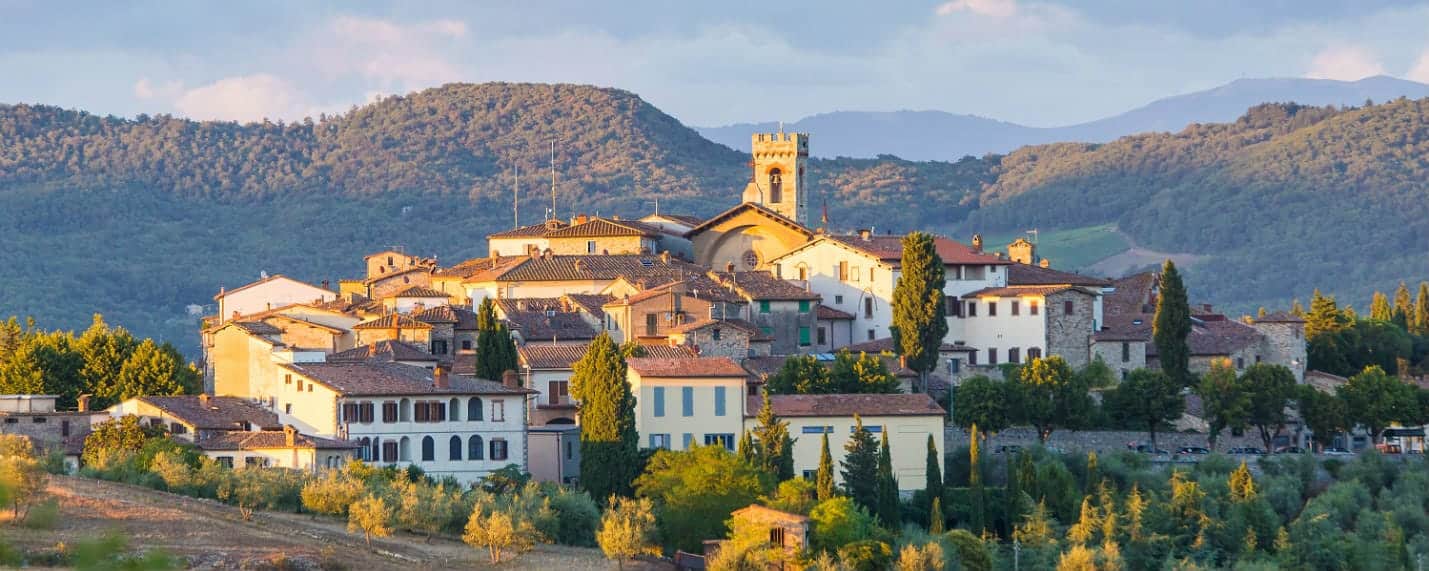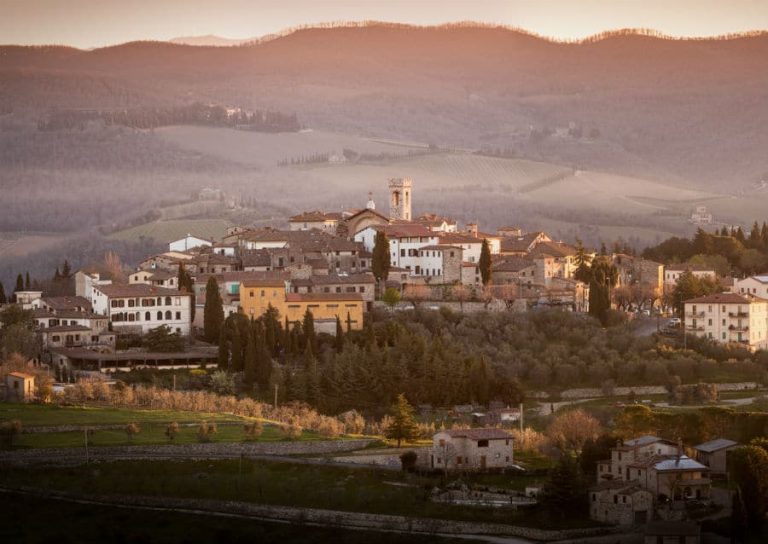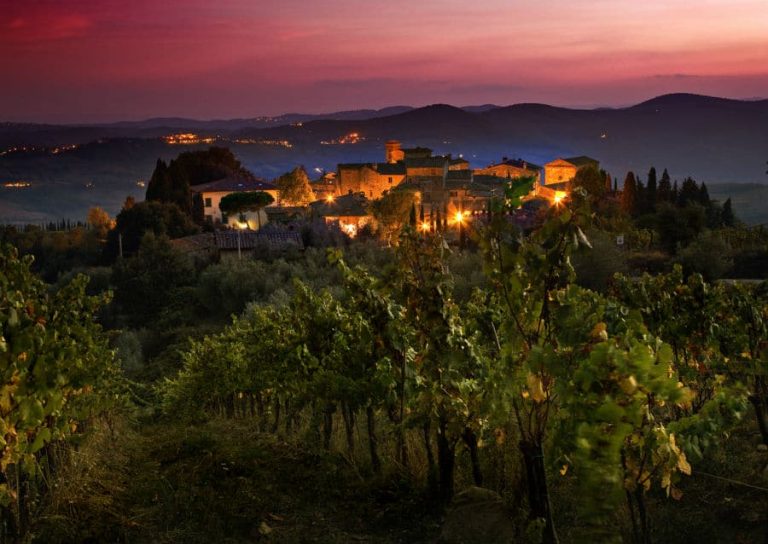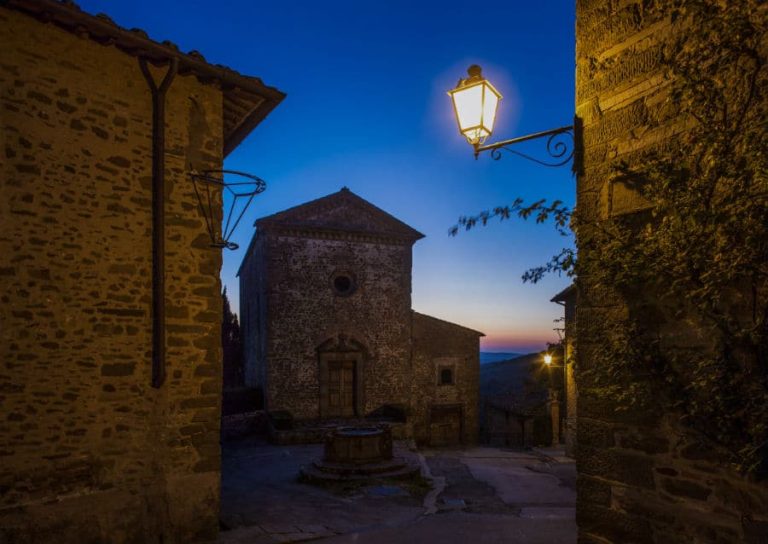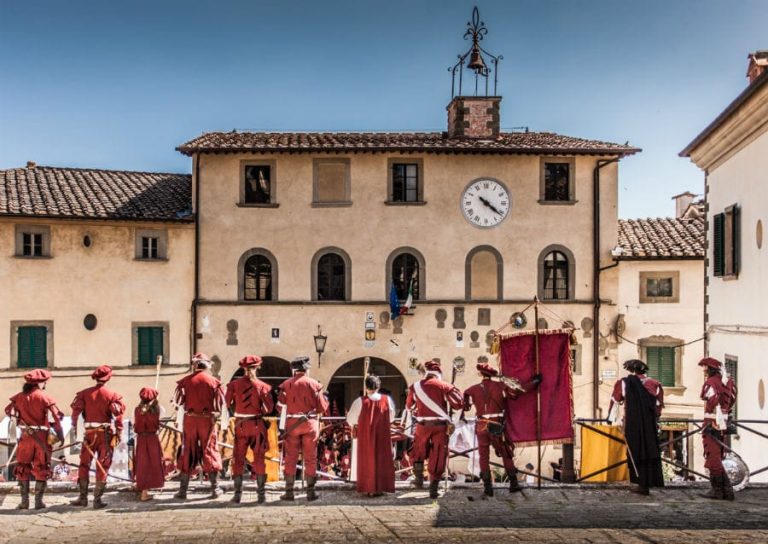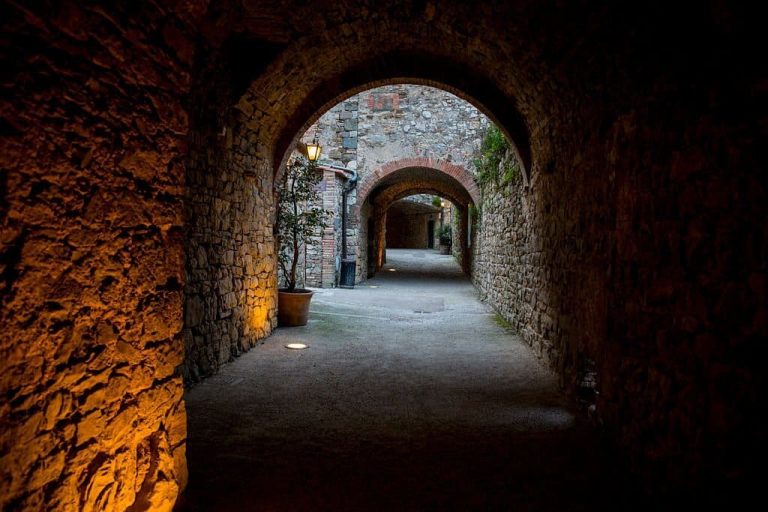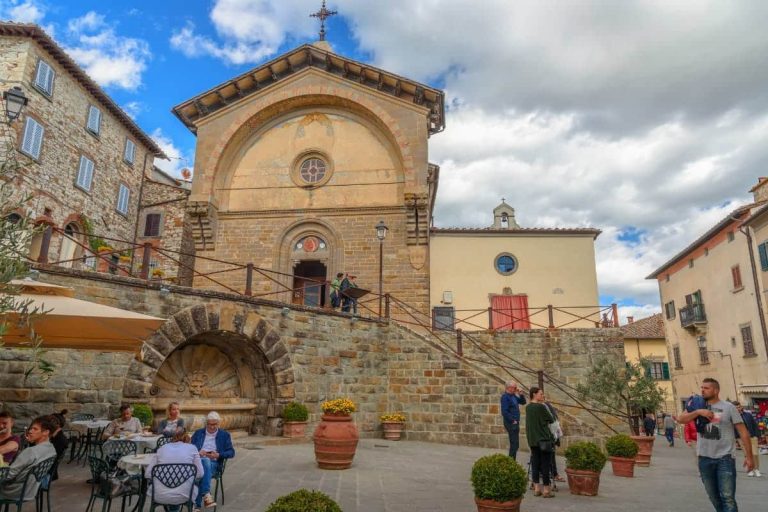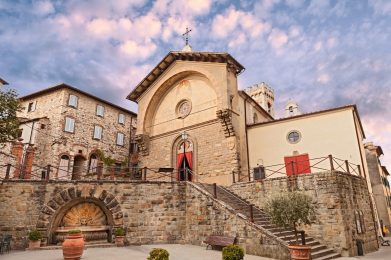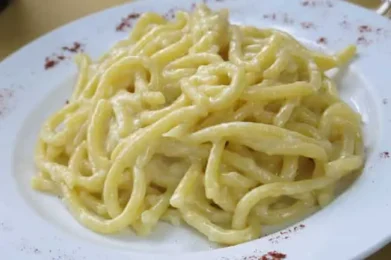Radda in Chianti is one of the most charming villages in Tuscany, located in the heart of Chianti Classico, an area that has become synonymous with vineyards, winemaking traditions and breathtaking landscapes. Its history is rooted in antiquity, when as early as the 9th century B.C. the area was inhabited, as evidenced by Etruscan archaeological finds in the area. However, the Radda we know today is closely linked to medieval times and the political vicissitudes of the region, which saw it as an important stronghold in the context of the Chianti League.
In the Middle Ages, the village was a focal point for the control of the territory, not only because of its strategic position between Florence and Siena, but also because of its military and commercial importance. Radda became the seat of the League of Chianti in 1250, an alliance that united the communities in the area to protect the territory from external threats. Despite difficulties related to attacks, first from Siena and then from internal struggles among the various Florentine families, the town always remained united, finding in wine its main source of livelihood and exchange. It was around Radda that one of the first forms of wine trade developed, which still characterizes the area today.
Radda's medieval core is dominated by what remains of its castle, which watched over the Chianti valley for centuries. Although much of the fortifications were destroyed in the course of invasions and conflicts, it is still possible to glimpse fragments of walls and watchtowers that tell the story of a time of wars and defenses. Today, the atmosphere in the village is more peaceful and relaxed, with its narrow streets, cobbled alleys and small squares inviting contemplation and discovery.
Strolling through the historic center, one cannot help but admire the Palazzo del Podestà, a 14th-century building that stands majestically in Piazza Ferrucci, the beating heart of the village. The building, once the seat of local government, has been restored and expanded over the centuries, and today houses a part of the administrative history of the village. Opposite the palace is the Propositura di San Niccolò, a church that, though altered over time, retains an undisputed charm. Its neo-Gothic facade and bell tower, rebuilt after the war using a castle tower, offer a glimpse that transports visitors to another era.
Although Radda's military history is now a distant memory, the town retains tangible traces of its strategic importance. For example, the medieval walls that can still be seen in some areas of the town, especially near the public gardens, are silent witnesses to the battles that were fought here. The town's urban structure is a perfect example of a medieval village that has evolved over time, maintaining its identity without sacrificing the beauty of the surrounding landscape.
Radda is also an ideal place for those who wish to immerse themselves in the authentic rural life of Chianti. The surrounding area is famous for its vineyards and wine production, and it is possible to visit numerous wineries that offer tastings and guided tours. The landscape surrounding the village is characterized by rolling hills covered with vineyards and olive groves, offering unforgettable views and the possibility of hiking or biking among the rows of vines.
Among the curiosities that deserve attention is the Ghiacciaia Granducale, a structure built to store ice during the summer months, another example of the ingenuity of the locals. Today, the terrace above the icehouse offers a spectacular panoramic view of the valley, a perfect spot to relax and enjoy the tranquility that characterizes Radda.
Radda in Chianti is the ideal place for those seeking an authentic experience, far from mass tourism but rich in history, culture and traditions. Its timeless beauty, combined with the quality of the wine produced there, makes it an ideal destination for a visit that allows you to immerse yourself in the true essence of Tuscany. If you have the chance to visit Radda, do not forget to stroll through its medieval walkways, discover its history and taste its fine wines, because Radda in Chianti is truly a place where history and nature intertwine in a perfect union.

